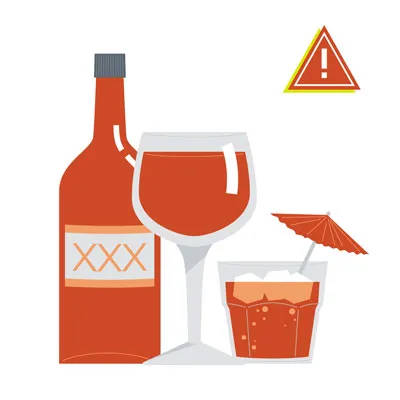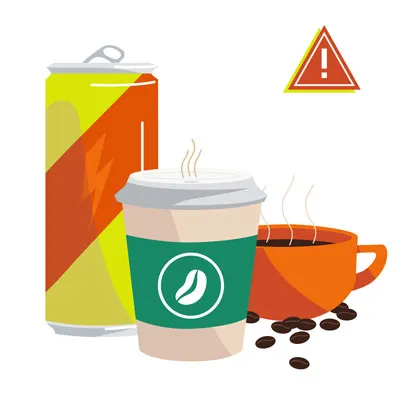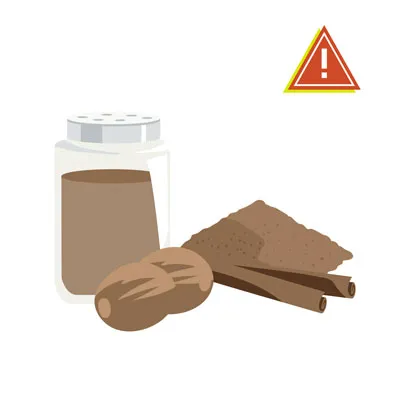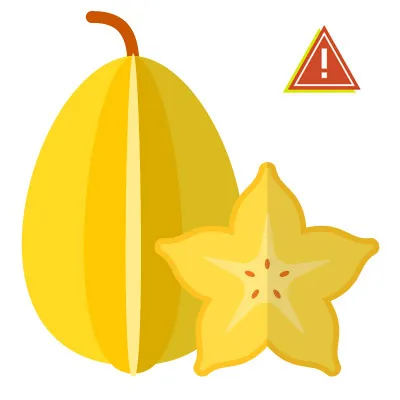Human foods can be a delightful treat for us, but for our canine companions, they can be a source of severe illness, or even prove fatal. While some human foods are perfectly safe and even beneficial for dogs, many common household items pose a significant threat. Pet poisonings are a serious concern, with over 401,500 incidents occurring annually in the United States alone. While not all of these are food-related, common household foods are a major contributor to these alarming statistics.
It can be challenging for pet owners to keep track of what’s safe and what’s not. That’s why being well-informed about foods to avoid, and conversely, what foods your dog can safely eat, is crucial for your furry friend’s well-being. This guide serves as your essential “cheat sheet” to help protect your dog from harmful ingestion. Knowing the specific dangers helps you create a safe environment and make informed decisions about your dog’s diet.
Why Certain Foods Are Toxic to Dogs
Canine digestion and metabolism differ significantly from our own, which explains why humans can safely consume many foods that are detrimental to dogs. Dogs’ bodies process certain substances in unique ways. For instance, dogs metabolize the theobromine and caffeine found in chocolate much slower than humans. This slower processing means these substances can rapidly accumulate in their system, potentially leading to fatal consequences.
While you might enjoy cherries, the cyanide present in their pits, stems, and leaves can be problematic for dogs if consumed in very large quantities. Additionally, cherry pits are difficult for dogs to digest and can cause diarrhea, making it best to avoid them altogether. The severity of food toxicity can also vary based on a dog’s size, breed, and overall health condition. Therefore, it is always important to consult your veterinarian if you have any questions about foods your dog should not eat.
List of Common Foods Dogs Cannot Eat
Many everyday household foods are dangerous, and often toxic, to dogs. Some of the most common and widely known foods that are bad for dogs include alcohol, avocados, macadamia nuts, grapes and raisins, xylitol, and chocolate. However, your dog should avoid all the foods listed below. This list highlights common dangerous items but is not exhaustive.
1. Alcohol
Due to their smaller size compared to humans, alcohol can have a far deadlier effect on cats and dogs. Even minuscule amounts of alcohol can cause harm, and the risk increases significantly with smaller pets. Symptoms of alcohol poisoning in dogs mirror those in humans, including vomiting, severe breathing problems, coma, and even death.
2. Apple, Apricot, Cherry, and Plum Seeds/Pits
While the fleshy parts of apples are safe for dogs, the core and apple seeds are not. Apple seeds contain cyanide, and though small amounts may not be immediately harmful, it’s safest to avoid the core and seeds entirely. Similarly, apricot, cherry, peach, and plum seeds and pits must be avoided. These fruit pits also contain cyanide, which can lead to vomiting, an irregular and rapid heartbeat, seizures, coma, and death, by impairing red blood cells’ ability to carry oxygen.
 Alcoholic beverage with a warning sign, emphasizing danger to pets.
Alcoholic beverage with a warning sign, emphasizing danger to pets.
3. Avocado
Avocados are not a suitable food choice for dogs. There have been reported cases of dogs experiencing myocardial damage after consuming avocados, though these results have not been consistently replicated. However, avocados are known to cause issues in other mammal species. Furthermore, an intact avocado pit can pose a serious choking hazard or cause an obstruction in a dog’s gastrointestinal tract. Therefore, it is best to avoid feeding this food to your dog.
4. Broccoli
Broccoli contains isothiocyanates, which can be harmful to pets in very large doses. Although small, occasional amounts of broccoli might be tolerated, it’s generally best to avoid it given the abundance of other healthy and safe food options. Additionally, broccoli stalks can sometimes become lodged in a dog’s throat, leading to an obstruction.
5. Caffeine and Coffee Grounds
Caffeine contains methylxanthines, compounds that can cause potentially fatal symptoms such as diarrhea, vomiting, seizures, and an irregular heartbeat. If your dog accidentally ingests coffee grounds or consumes any high-caffeine drink, their heart rate may dangerously accelerate. This can manifest in seizures, tremors, arrhythmia, difficulty breathing, and other severe symptoms, necessitating immediate veterinary attention.
 Coffee beans and grounds, illustrating the danger of caffeine to dogs.
Coffee beans and grounds, illustrating the danger of caffeine to dogs.
6. Chicken & Turkey Skin, Ham, & Other Fatty Cuts of Meat
Fatty cuts of meat, ham, and other high-fat items like chicken or turkey skin should be discarded rather than offered to pets as treats. These are harmful to dogs due to their high-fat content, which can trigger acute pancreatitis—a life-threatening illness with potentially severe complications.
Furthermore, always avoid giving turkey and chicken bones to your dog. If these bones splinter, they can cause bowel obstructions or damage the stomach or intestines. In severe cases, this can lead to a puncture of the stomach or intestines, resulting in a fatal abdominal infection.
7. Chocolate
Chocolate toxicity remains one of the most frequent causes of pet poisoning, especially during holidays. Your dog should absolutely not consume any chocolate product. Chocolate contains a lethal component called theobromine, with darker chocolates containing higher concentrations. Chocolate also contains caffeine, and some sugar-free varieties may include xylitol, which is also highly toxic to dogs.
Dogs and cats cannot metabolize chocolate as effectively as humans. Dark chocolate or baker’s chocolate are the most dangerous forms, but any type of chocolate can be problematic. Symptoms associated with chocolate ingestion can include hyperactivity, vomiting, diarrhea, pancreatitis, abnormal heart rhythm, and seizures. If your dog ingests any amount of chocolate, no matter how small, contact your veterinarian immediately.
8. Grapes and Raisins
Grapes and raisins are exceptionally dangerous for dogs. These fruits can lead to severe problems, including acute kidney failure, because their tartaric acid is highly toxic to a dog’s kidneys. Even a few bites are enough to cause significant harm. Symptoms of raisin or grape poisoning include vomiting and diarrhea, loss of appetite, changes in the amount of urine produced, or complete anuria (absence of urine production).
 Cluster of grapes, highlighting their toxicity to dogs.
Cluster of grapes, highlighting their toxicity to dogs.
9. Macadamia Nuts, Almonds, & Pistachios
Macadamia nuts can cause dogs to suffer from numerous painful symptoms, including weakness, overheating, and vomiting. Although the exact mechanism of poisoning remains somewhat mysterious, these nuts are definitively considered toxic to dogs. As few as six nuts can induce severe poisoning in a small dog.
While macadamia nuts are the most dangerous, other nuts like pistachios and almonds can also pose choking hazards or become problematic if they are flavored or spiced. It’s always safer to keep all types of nuts away from your canine companion.
10. Milk & Dairy Products
Milk and other dairy products should be evaluated on a case-by-case basis for dogs. Some dogs can consume milk or dairy products without issue. However, many dogs are lactose intolerant or allergic, and may experience diarrhea and gas after consuming cow’s milk.
Ice cream is also generally bad for dogs due to its high sugar and fat content. Instead of ice cream, consider offering your pup frozen bites of healthy fruits that are safe for dogs. As for cheese, it is acceptable in small quantities, but stick to lower-fat varieties as an occasional treat rather than high-fat options. For more insights on what human food can dogs eat safely, refer to our comprehensive guide. what human food can dogs eat safely
11. Mushrooms
It is always best to exercise caution and avoid feeding your dog any mushrooms. Mushrooms contain a variety of toxins that can potentially cause kidney and liver failure, vomiting, diarrhea, hallucinations, and damage to red blood cells. While washed, white mushrooms from a grocery store might be acceptable, it is likely safer to choose a different, unequivocally safe treat.
12. Nutmeg & Cinnamon
Dogs should never be fed any foods containing nutmeg. This spice can induce hallucinations and severe vomiting. Therefore, even if your dog begs for a nutmeg-spiced cookie, it is vital to resist giving in. The compound responsible is myristicin, and its effects are stronger when consumed in high doses or by smaller dogs. If your dog ingests any amount of nutmeg, contact your veterinarian for guidance.
Cinnamon should also be avoided, not because it is inherently toxic, but because it can irritate your dog’s mouth and, in some cases, lead to low blood sugar, which can have serious health implications for your pup.
 Ground nutmeg and cinnamon sticks, indicating their toxicity to dogs.
Ground nutmeg and cinnamon sticks, indicating their toxicity to dogs.
13. Onions, Garlic, Chives, & Leeks
Many pet owners are surprised to learn that herbs belonging to the allium family—such as onions and garlic—are not safe for their dogs. Onions and garlic contain sulfoxides and disulfides, compounds that can damage red blood cells and lead to anemia in both dogs and cats. Onion and garlic powders are found in many prepared foods, even baby food, so it is crucial to read labels before offering any store-bought food to your pet.
In fact, all allium plants, including chives and leeks, can cause potentially fatal anemia in dogs and cats. Certain Japanese dog breeds, such as Akitas and Shiba Inus, are particularly sensitive to allium plants, but these plants are dangerous for all dogs.
14. Salt
Excessive amounts of salt can disrupt the fluid balance of cells in your dog’s body. Too much salt can result in tremors, seizures, diarrhea, or even a coma. Whether your dog is begging for a bite of rock salt, homemade play dough, or potato chips, do not let their pleading eyes compromise their health.
15. Spicy Food
Keep your dog away from spicy food. Hot, spicy food can cause vomiting, stomach ulcers, or diarrhea, which can be incredibly painful for your dog and potentially costly for you if an emergency vet visit is required.
16. Sugar-Free Gum & Candy (Xylitol)
Xylitol is an artificial sweetener commonly found in many human foods, including sugar-free gum and candy. However, in dogs, xylitol can trigger a rapid and dangerous drop in blood sugar, leading to weakness and even seizures. Some dogs may also experience liver failure.
Cases of dog poisoning involving this artificial sweetener, often found in sugar-free baked goods, are unfortunately on the rise. The amount of xylitol present in just five pieces of gum has the potential to be fatal for a 65-pound dog. It’s crucial to be vigilant about what foods can dogs can not eat, especially those containing this hidden danger. what foods can dogs can not eat
17. Tomatoes & Raw Potatoes
Tomatoes and potatoes fall into the category of “safe in some forms, unsafe in others.” A ripened red tomato is generally acceptable for dogs. However, the green parts of the tomato plant contain solanine, a compound toxic to dogs. Green, unripe tomatoes also contain solanine.
Potatoes follow a similar rule. If baked or boiled without additives, they are generally safe in small amounts. However, raw potatoes also contain solanine, which is toxic to dogs.
 Unripe tomatoes and raw potatoes, illustrating the parts that are toxic to dogs.
Unripe tomatoes and raw potatoes, illustrating the parts that are toxic to dogs.
18. Tobacco
Tobacco is extremely dangerous and unhealthy for your pup. Exposure to nicotine-containing products can cause a wide range of symptoms, including vomiting, diarrhea, rapid or labored breathing, agitation, abnormal heart rate, wobbliness, muscle weakness, high or low blood pressure, seizures, and tremors. More significant or frequent exposure to tobacco can lead to blue gums and coma, and ultimately may prove fatal.
Dogs are naturally curious. They might encounter a discarded cigarette on a walk or sniff through an ashtray containing cigarette butts. If your dog ingests any form of tobacco, you must act quickly and take them to the veterinarian immediately.
19. Yeast & Raw Dough
Yeast and raw dough are unsafe for dogs for several reasons. Raw dough can expand significantly in your dog’s stomach, causing severe pain and potentially life-threatening gastric torsion or rupture.
Furthermore, the yeast and sugar in raw dough can ferment, producing alcohol and leading to alcohol toxicity. This can rapidly become fatal and requires immediate medical intervention.
20. Raw Meat
Never feed your dog raw or undercooked meat. The possible presence of Salmonella or E. coli in raw meat can be harmful to dogs, just as it is to humans. Additionally, the bones in raw meat pose a choking hazard for your dog.
21. Rhubarb
Rhubarb, a common ingredient in desserts, is not safe for pets. This plant contains soluble calcium oxalate crystals, particularly in its leaves. If consumed in large enough quantities, these crystals can bind with calcium in the body, causing a dangerous drop in calcium levels and potentially leading to renal (kidney) failure. Symptoms include tremors, weakness, drooling, bloody urine, changes in thirst and urination, and vomiting.
22. Star Fruit
Similar to rhubarb, star fruit also contains soluble calcium oxalate crystals. It is best not to let your dog snack on this fruit.
 Sliced star fruit, highlighting its beautiful but dangerous nature for dogs.
Sliced star fruit, highlighting its beautiful but dangerous nature for dogs.
23. Flavored Water and Seltzer Water
When it comes to your dog’s hydration, it’s always best to err on the side of caution and provide fresh, clean water rather than anything flavored or carbonated. Seltzer and flavored waters can contain added ingredients that are dangerous for pups, including excessive sugar or salt. While plain seltzer water might be acceptable in small amounts if urgently needed, it can often lead to gas and bloating. Sticking to plain water is the safest and healthiest choice for your dog. For a deeper dive into what human food dog can eat, explore our detailed articles. what human food dog can eat
What Dogs Are Most at Risk if They Consume Toxic Foods?
While preventing any dog from ingesting toxic foods is paramount, some dogs are inherently more vulnerable than others. Understanding these risk factors can help you be even more vigilant.
- Small Breeds vs. Large Breeds: Smaller dogs face a greater risk due to their lower body weight, especially when exposed to substances like chocolate. A smaller body mass means toxic compounds become concentrated more quickly, leading to more severe effects.
- Puppies: Younger dogs possess less developed digestive and immune systems. This makes them significantly more susceptible to harm from certain substances, including some foods that might be less dangerous for adult dogs, and even raw dog food.
- Elderly Dogs: Older dogs may be at a higher risk due to other co-existing health conditions they might have. For example, dogs with pre-existing health problems should generally not be fed raw dog food. Their bodies may not be able to handle the additional strain of processing potentially harmful substances.
- Dogs with Pre-existing Conditions: Many pre-existing health conditions, such as diabetes or kidney disease, can place a dog at a much greater risk when exposed to toxic foods. Their compromised systems are less equipped to detoxify or cope with the adverse effects of harmful ingredients.
How to Prevent Dogs from Eating Toxic Foods
While accidents can happen despite our best efforts, you can take several proactive steps to significantly minimize the risk of your beloved pup getting into unsafe human food. Being prepared and vigilant is key to ensuring their safety.
1. Store Foods Out of Reach
Ensure that your dog cannot access any toxic food. Keep dangerous items on high shelves that are too tall for your dog to reach, or securely locked away in a cabinet that your pup cannot open. This simple step can prevent many accidental ingestions.
2. Avoid Feeding Dogs from Your Plate
It’s a common habit, but avoid feeding your dog directly from your plate or in the kitchen while you are cooking, even if you just intend to give them a small, seemingly safe treat. The safest practice is to only give your pup treats that are specifically manufactured and designed for dogs.
3. Educate Family Members and Guests
Educate all family members, including children, and any guests who visit your home. Make sure they understand that no matter how tempting it might be, they should never sneak any human food to your dog. Consistency in this rule is vital for your dog’s safety.
4. Be Careful During Holidays
Be extra cautious during the holidays, as the bustling season can make it easy to let your guard down while you’re cooking or hosting. The increased presence of diverse foods and distractions can heighten the risk of accidental ingestion. For more ideas on what human food can dogs eat as a meal, check out our curated list. what human food can dogs eat as a meal
If, despite all your precautions, your dog does consume something toxic, being prepared to act fast is crucial. Keep contact information readily accessible for emergency veterinarians who are available 24/7, including on holidays, or for pet poison control hotlines.
What To Do if Your Dog Eats Something Toxic
If you suspect your dog has eaten toxic food, obtaining help as quickly as possible is paramount. Familiarize yourself with the common symptoms of food toxicity so you can swiftly recognize if your dog has ingested something harmful. Symptoms vary depending on what your pup consumed but can include listlessness, distress, pain, vomiting, bloody stools, and a bloated stomach that feels hard to the touch due to gas. This painful condition can cause the stomach to rupture if left untreated.
If you observe these symptoms, take the following actions immediately:
- Call your veterinarian or poison control right away. Timing is critical. Treatments are typically more successful and hospitalization periods are shorter if a dog receives prompt medical attention.
- Be prepared with all important information. This includes the type of food eaten, the estimated amount consumed, and the time of ingestion.
- Avoid home remedies unless advised by your veterinarian. Remedies may vary significantly depending on the specific substance ingested. Even inducing vomiting can be harmful in certain situations and should only be done under veterinary guidance.
Pets Best Can Help You Keep Your Dog Healthy
From common household toxins to dangerous foods, it can be challenging to keep track of everything your dog shouldn’t get into. And let’s face it, dogs don’t always have the most discerning taste! However, by diligently following this guide and remaining vigilant, you can significantly help protect your dog from foods that could harm them.
The good news is that there are plenty of foods that are both safe and healthy for your dog to enjoy! Discover which safe human foods your dog loves from our extensive list and offer them as treats when they’ve been good. If you are ever unsure about any particular food, always consult with your veterinarian for expert advice. Maintaining a strong understanding of what can dog eat that’s human food will ensure your furry friend stays happy and healthy. what can dog eat that’s human food
Pet insurance offers an excellent way to help protect your dog from unexpected toxins they may encounter. At Pets Best, our dog and puppy insurance plans can be tailored to meet your pet’s unique needs. Additionally, Pets Best policyholders have access to a veterinary expert anytime through a 24/7 Pet Helpline, which can be an invaluable resource if you’re concerned about something your pet may have eaten.
References
- “Top 10 dog poisons,” Hilary Parker (5/2023), WebMD.
- “What happens if a dog eats chocolate?” (10/2023), Colorado State University.
- “Fruits and vegetables dogs can or can’t eat,” (3/2024), American Kennel Club.
- “What to do if your dog drinks alcohol,” Jerry Klein (7/2023), American Kennel Club.
- “Can dogs eat apples?” Hector Joy (12/2022), PetMD.
- “Can dogs eat plums?” Katie Koschalk (7/2023), Chewy.
- “Avocado (Persea spp) Toxicosis in Animals,” Cristine Hayes (9/2024), Merck Veterinary Manual.
- “People foods to avoid feeding your pets,” (n.d.), ASPCA.
- “People foods dogs can and can’t eat,” (3/2024), American Kennel Club.
- “Can dogs eat nuts?” Amanda Ardente (1/2023), PetMD.
- “Can dogs drink milk?” Sandra C. Mitchell (1/2024), PetMD.
- “Can dogs have nutmeg?” Barri J. Morrison (11/2023), PetMD.
- “Onion, garlic, chive, and leek poisoning in dogs,” Renee Schmid et al. (2024), VCA Animal Hospitals.
- “Can dogs eat tomatoes?” Anna Burke (10/2024), American Kennel Club.
- “Can dogs eat potatoes?” Katherine Ripley (11/2023), American Kennel Club.
- “What to do if your dog eats a cigarette butt,” (6/2023), American Kennel Club.
- “Dough & dogs: Why it’s bad and what you can do,” Lisa Goldstein (7/2024), Preventive Vet.
- “Rhubarb,” (n.d.), Pet Poison Helpline.
- “Can dogs drink carbonated water?” Heather Logue (n.d.), Rover.
- “What fruits can dogs eat?” Ellen Malmanger (2/2024), PetMD.
- “Can dogs have green beans?” Anna Burke (8/2022), American Kennel Club.
- “About pet food safety,” (4/2024), CDC.
